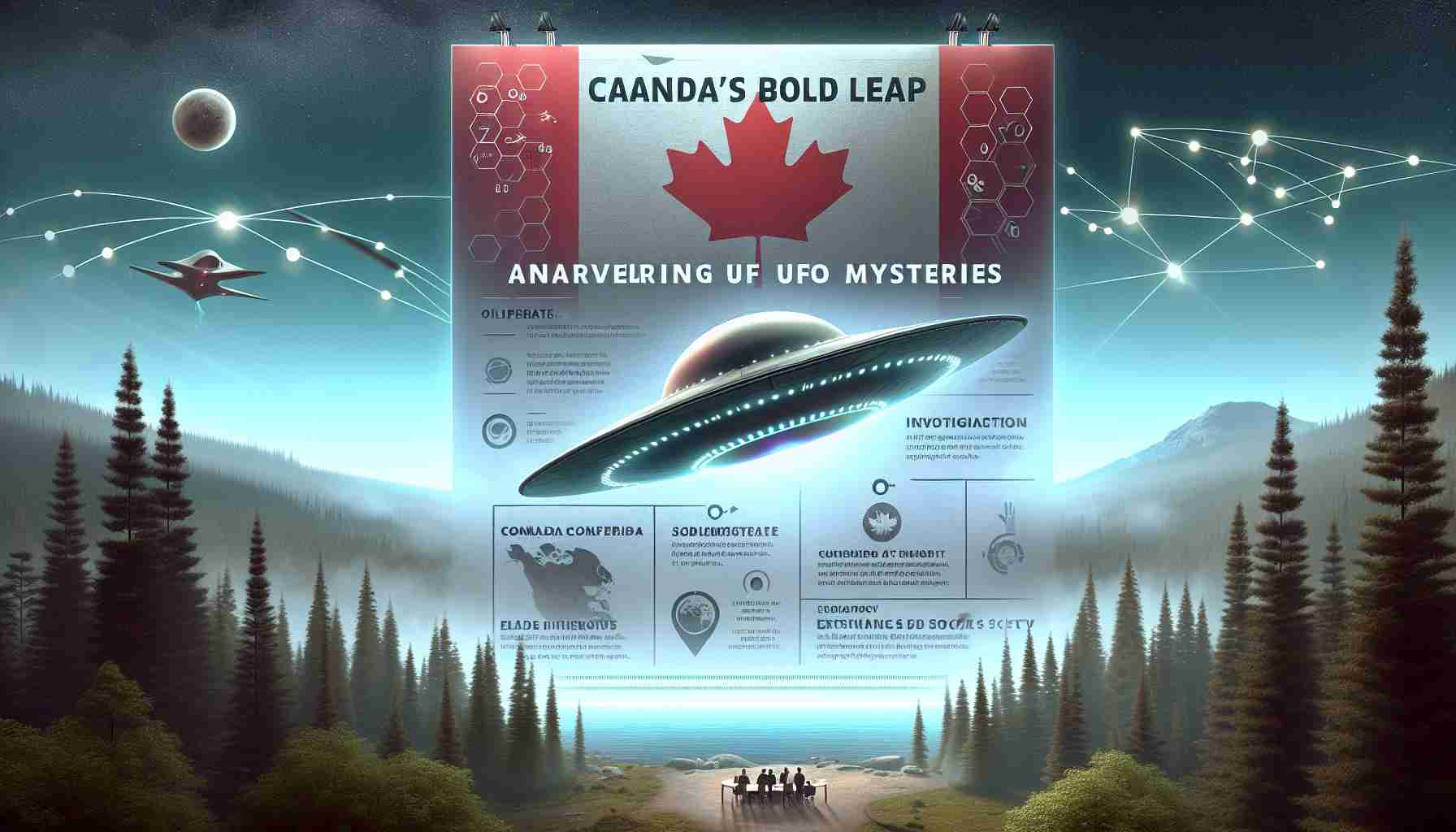- Canada has launched a national survey on unidentified aerial phenomena (UAPs) led by Dr. Mona Nemer.
- Despite 27% of Canadians witnessing UAPs, only 7% express strong interest, with British Columbia having the highest sighting rate at 32%.
- Dr. Nemer advocates for a dedicated federal agency to systematically analyze UAP data.
- The initiative aims to enhance transparency and communication about UAP sightings.
- Public opinions vary, ranging from extraterrestrial theories to attributing sightings to advanced technology or weather.
- Canada seeks to lead in UAP exploration as global curiosity about these phenomena grows.
Watch Now: The Unveiling of Canada’s UFO Initiative
Canada is turning heads with a pioneering national survey delving into the enigmatic world of unidentified aerial phenomena (UAPs). Under the guidance of Dr. Mona Nemer, the country’s chief science advisor, this initiative seeks to unravel the mysteries of the skies. However, what’s eye-opening is that a meager 7% of Canadians show significant interest in these puzzling sightings, despite 27% having witnessed unexplainable aerial events. In British Columbia alone, an impressive 32% of residents report spotting these elusive phenomena.
Dr. Nemer, a respected biochemist, is on a mission to enhance the nation’s approach to managing UAP reports. Despite lukewarm public enthusiasm, she champions the idea of creating a specialized federal agency dedicated to systematically collecting and analyzing UAP data. Her goal is to foster transparency and communication about these intriguing occurrences. While the public remains divided—some speculating about extraterrestrial life, others attributing sightings to advanced technology or weather phenomena—Canada is determined to lift the veil of mystery.
This initiative gains momentum as global interest in UAPs escalates, urging nations to ponder what lies beyond our usual perception. The sky’s enigmatic dance continues to captivate, promising potential revelations that could reshape our understanding of the universe. As curiosity surges, Canada takes definitive steps to become a leader in this field. The exploration is just beginning. Will you be part of this thrilling journey into the unknown?
Explore Canada’s Bold Step Into the Unknown: UFO Initiative Unveiled
How is Canada’s UFO Initiative Different from Others?
Canada’s approach to the UFO initiative is unique in its scientific rigor and ambition to establish a federal agency specifically for UAP (Unidentified Aerial Phenomena) analysis. Unlike many countries that have anecdotal or fragmented approaches to UFO sightings, Canada aims to systematically collect and dissect these reports under the leadership of Dr. Mona Nemer. This could set a new standard for UFO research worldwide, focusing on transparency and open communication.
Why Are Canadians So Divided on the Topic of UFOs?
The Canadian public is notably split on the UFO initiative’s relevance, a phenomenon partially explained by differing perspectives. While only 7% show keen interest, 27% of Canadians say they’ve witnessed unexplained aerial events. These statistics suggest a disconnect between personal experiences and perceived importance. It highlights the necessity for Dr. Nemer’s initiative to bridge the gap with clear, compelling information.
What Could Be the Long-term Impact on UFO Research and Public Perception?
If Canada successfully establishes a dedicated federal agency for UFO research, it could lead to a paradigm shift not just domestically but globally. With rigorous data collection and analysis, Canada could clarify the origins of these phenomena, potentially demystifying UFOs and influencing public perception. In the long run, this initiative might foster global collaborations, leading to shared databases and joint studies, thereby advancing both scientific understanding and technological innovation in dealing with UAPs.
For more updates on similar initiatives and breakthroughs, visit Canada.ca.
Insight into Canada’s Approach
Canada is poised to redefine how societies engage with the phenomena often relegated to the fringes of scientific exploration. The approach spearheaded by Dr. Mona Nemer reflects a broader understanding of UAPs, urging the public and policymakers to consider their implications beyond just the question of extraterrestrial existence.
Specifications and Trends
Canada’s proposal for a federal agency dedicated to UAP analysis includes cutting-edge data collection methodologies and collaboration with international bodies. With British Columbia reporting 32% of sightings, this region might act as a central hub for data gathering, suggesting regional emphasis based on reported activity.
Innovations and Future Outlook
As Canada moves forward, potential innovations might include AI-driven analysis of sighting data, increasing the accuracy and reliability of findings. The consistent documentation and evaluation of such phenomena could lead to uncharted territories in both aerospace and defense sectors, inspiring nations worldwide to adopt similar methods.
The future of UFO and UAP paradigms promises not just an exploration of the unexplained but could pave the way for groundbreaking discoveries, altering humanity’s understanding of our existence and place in the universe. Will Canada spearhead this cosmic exploration? Time will tell.



















